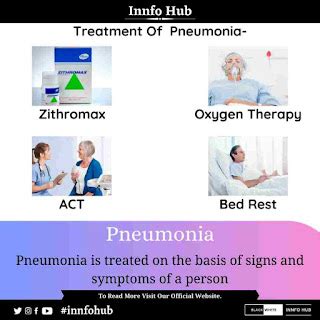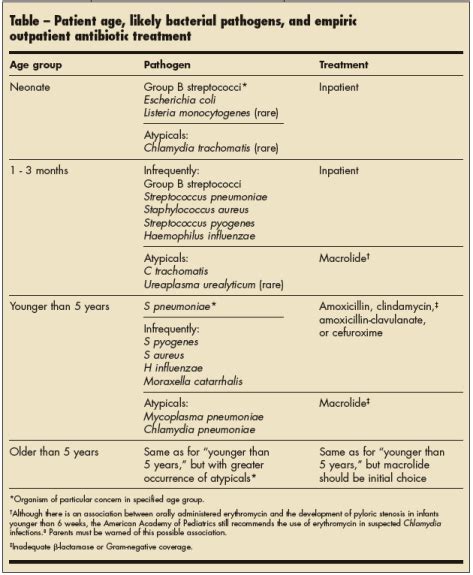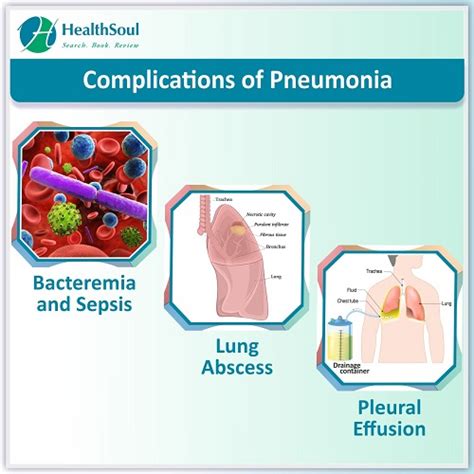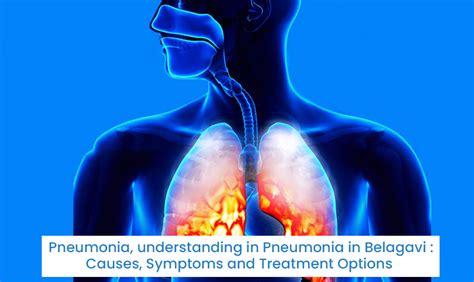Intro
Learn 5 effective ways to treat pneumonia, including antibiotics, respiratory therapy, and home remedies, to help manage symptoms and prevent complications, promoting lung health and recovery from this serious respiratory infection.
Pneumonia is a serious and potentially life-threatening condition that affects millions of people worldwide every year. It is an infection that inflames the air sacs in one or both lungs, which can fill with fluid and make it difficult to breathe. The severity of pneumonia can vary greatly, ranging from mild to severe, and it can be caused by a variety of factors including bacteria, viruses, and fungi. Understanding the different ways to treat pneumonia is crucial for effectively managing the condition and preventing complications.
Pneumonia can affect anyone, but it is most common among young children, older adults, and people with weakened immune systems. The symptoms of pneumonia can vary depending on the severity of the infection, but common signs include coughing, fever, chills, and difficulty breathing. In severe cases, pneumonia can lead to serious complications such as respiratory failure, sepsis, and even death. Therefore, it is essential to seek medical attention immediately if symptoms persist or worsen over time.
The treatment of pneumonia depends on the underlying cause of the infection, as well as the severity of the symptoms. In general, treatment options include antibiotics, antiviral medications, and supportive care such as rest, hydration, and oxygen therapy. In severe cases, hospitalization may be necessary to provide close monitoring and intensive care. It is also important to note that preventing pneumonia is key, and this can be achieved through vaccination, practicing good hygiene, and avoiding close contact with people who have the infection.
Understanding Pneumonia Treatment Options

Understanding the different treatment options for pneumonia is crucial for effectively managing the condition. The primary goal of treatment is to eliminate the underlying cause of the infection, reduce symptoms, and prevent complications. Antibiotics are commonly used to treat bacterial pneumonia, while antiviral medications are used to treat viral pneumonia. In addition to these medications, supportive care such as rest, hydration, and oxygen therapy can help to alleviate symptoms and support the body's natural healing processes.
Antibiotics for Bacterial Pneumonia
Antibiotics are the primary treatment for bacterial pneumonia. These medications work by killing the bacteria that are causing the infection, which can help to reduce symptoms and prevent complications. The type and duration of antibiotic treatment will depend on the severity of the infection, as well as the type of bacteria that is causing it. In general, antibiotics are taken for 7-10 days, but the exact duration of treatment will depend on the individual's response to the medication.5 Ways to Treat Pneumonia

There are several ways to treat pneumonia, depending on the underlying cause of the infection and the severity of the symptoms. Here are 5 ways to treat pneumonia:
- Antibiotics: Antibiotics are the primary treatment for bacterial pneumonia. These medications work by killing the bacteria that are causing the infection, which can help to reduce symptoms and prevent complications.
- Antiviral medications: Antiviral medications are used to treat viral pneumonia. These medications work by reducing the severity of symptoms and preventing the spread of the infection.
- Rest and hydration: Rest and hydration are essential for helping the body to recover from pneumonia. Drinking plenty of fluids can help to thin out mucus and reduce congestion, while rest can help to conserve energy and support the body's natural healing processes.
- Oxygen therapy: Oxygen therapy may be necessary for people with severe pneumonia who are experiencing difficulty breathing. This treatment involves breathing in oxygen through a mask or tube, which can help to increase oxygen levels in the blood and reduce symptoms.
- Hospitalization: In severe cases, hospitalization may be necessary to provide close monitoring and intensive care. This can include oxygen therapy, intravenous antibiotics, and other supportive care to help manage symptoms and prevent complications.
Preventing Pneumonia
Preventing pneumonia is key, and this can be achieved through vaccination, practicing good hygiene, and avoiding close contact with people who have the infection. Vaccines are available to protect against certain types of pneumonia, such as pneumococcal pneumonia, and can be especially important for young children, older adults, and people with weakened immune systems.Complications of Pneumonia

Pneumonia can lead to serious complications, especially in people with weakened immune systems or underlying health conditions. Some common complications of pneumonia include:
- Respiratory failure: Pneumonia can cause respiratory failure, which is a life-threatening condition that requires immediate medical attention.
- Sepsis: Pneumonia can lead to sepsis, which is a condition that occurs when the body's response to an infection becomes uncontrolled and causes widespread inflammation.
- Acute respiratory distress syndrome (ARDS): Pneumonia can cause ARDS, which is a condition that occurs when the lungs become inflamed and cannot provide enough oxygen to the body.
- Bacteremia: Pneumonia can lead to bacteremia, which is a condition that occurs when bacteria enter the bloodstream and cause a widespread infection.
Treatment Outcomes
The outcome of pneumonia treatment depends on the underlying cause of the infection, as well as the severity of the symptoms. In general, people with mild pneumonia can expect to make a full recovery with treatment, while those with severe pneumonia may experience more serious complications. It is essential to seek medical attention immediately if symptoms persist or worsen over time, as prompt treatment can help to improve outcomes and prevent complications.Conclusion and Next Steps

In conclusion, pneumonia is a serious and potentially life-threatening condition that requires prompt medical attention. Understanding the different treatment options for pneumonia is crucial for effectively managing the condition and preventing complications. By seeking medical attention immediately and following a treatment plan, people with pneumonia can expect to make a full recovery and reduce their risk of complications.
We encourage you to share your thoughts and experiences with pneumonia in the comments below. If you have any questions or concerns, please do not hesitate to reach out to a healthcare professional for guidance and support. Additionally, we invite you to share this article with others who may be interested in learning more about pneumonia treatment options.
What are the symptoms of pneumonia?
+The symptoms of pneumonia can vary depending on the severity of the infection, but common signs include coughing, fever, chills, and difficulty breathing.
How is pneumonia diagnosed?
+Pneumonia is typically diagnosed through a physical examination, medical history, and diagnostic tests such as chest X-rays and blood tests.
Can pneumonia be prevented?
+Yes, pneumonia can be prevented through vaccination, practicing good hygiene, and avoiding close contact with people who have the infection.
What are the complications of pneumonia?
+Pneumonia can lead to serious complications, including respiratory failure, sepsis, and acute respiratory distress syndrome (ARDS).
How long does it take to recover from pneumonia?
+The recovery time for pneumonia can vary depending on the severity of the infection and the individual's overall health. In general, people with mild pneumonia can expect to make a full recovery within 1-2 weeks, while those with severe pneumonia may take longer to recover.
